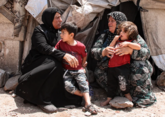The security of the external borders of the European Union is likely to be tested this year, says the Warsaw-based European Border and Coast Guard agency. "Our external borders will be tested, very likely in 2019 again and also the borders of neighbouring countries," Fabrice Leggeri, the head of the agency, told reporters in Brussels on Wednesday (20 February), EUObserver writes in the article No burning crisis' on migrant arrivals, EU agency says.
The agency's budget and staff has expanded over the years, turning it into what Leggeri now describes as a law enforcement body. Its budget to help return rejected asylum applicants, for example, jumped from €13m in 2015 to almost €54m in 2018. In 2015, its overall budget was €143m. Last year it was €320m. Leggeri's warnings also come amid recent border control car purchases by the agency and other efforts to procure long-term leases for boats. "These are necessary steps in order to prepare the agency in its role today and possible reinforcement tomorrow," he said.
But at the same time,there is EU wrangling over European Commission proposals to have 10,000 border guards at the agency's disposal by 2020. Discussions are set to take place later today on the 10,000 figure among member state experts. Not everyone is happy, with some, like Hungary, fearful it could erode national sovereignty, while others, like Poland, worry it would mean less money for structural funds. Last year, Austria's EU presidency proposed dropping it to 5,000. "You can't just go shopping in a super market and pick up 10,000 officers from the shelf," Herbert Kickl, Austria's interior minister, told reporters in December ahead of an EU summit.
Migrant arrivals drop for third consecutive year
Leggeri's comments also follow the annual publication of the agency's risk analysis report for 2019, which noted some 150,000 people had attempted to cross the Mediterranean Sea in 2018. "This is the third consecutive year in which the numbers of arrivals have been falling," he said, noting that there is "no burning crisis" of irregular crossings at the external borders. People making their way towards the European Union either to seek asylum or look for opportunities typically take one of three routes: the central, western or eastern Mediterranean route.
What had once been the most popular route, the central Mediterranean, has since seen an 80 percent drop in arrivals or 23,500, mainly from Libya, when compared to 2017. A 2017 deal by the Italian government with Libya, despite spiralling insecurity there, and an EU-trained Libyan coast guard sending rescued hopefuls back to Libya are among the reasons the arrival rates along the central route is the lowest in six years.Tunisia has since taken over Libya as the main departure point in the central route, composed mostly of Tunisian and Eritrean nationals leaving the country by boat. "The decrease of arrivals that was observed in the central Mediterranean route clearly also resulted in the displacement affect on the western Mediterranean route," noted Leggeri.
It means that last year most left from Morocco to reach Spain. In absolute terms, the route experienced the most traffic with 57,000 arrivals to Europe. A lot of those came from sub-Saharan countries, although the number of Moroccan nationals also taking the journey has spiked in the past few months. Meanwhile, pressure has also increased by a third on the eastern Mediterranean route, with some 56,000 arrivals. The bulk of that pressure came through the land border between Greece and Turkey, with Turks as the main nationality.










